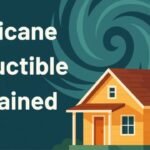In a world where hurricanes are becoming more frequent and intense, it’s never too early to prepare children with life-saving knowledge. But the best hurricane safety activities don’t just repeat rules, they make preparedness feel like a game, a challenge, or even a mini adventure. That’s the beauty of today’s tools: they turn worry into wonder. Whether you’re a parent, teacher, or community volunteer, blending hands-on games, storytelling, and smart tech can help kids not only understand hurricane safety, but truly remember what to do when the skies turn grey.
Why Kid-Friendly Hurricane Safety Matters
Children are incredibly observant. They pick up on the tension when hurricane warnings flash on the screen, when grownups speak in hushed tones, or when the pantry suddenly fills with batteries and peanut butter. But fear is not a plan. One of the most effective things we can do for them is offer hurricane safety activities that give them a sense of control, clarity, and even curiosity.
Research from the CDC shows that kids who take part in emergency preparation activities bounce back faster emotionally after storms. Familiarity helps reduce panic, and when kids know their role in a safety plan, they’re far more likely to act quickly and calmly when needed. This is especially true when learning happens through interactive, repeatable methods like games, songs, or roleplay.
Turning Preparation into Play: Smart Safety Activities
Let’s walk through some of the most effective hurricane safety activities that mix science, play, and preparedness, all while keeping children engaged and empowered.
1. Hurricane Emergency Kit Race
Give kids a fun mission: pack a hurricane go-bag for the family. Lay out a table of mixed items — flashlights, snacks, socks, and decoys like toys or kitchen tools. Set a timer and challenge kids to select the right gear in under two minutes. This scavenger-style game sharpens their sense of what’s essential. Afterward, review their picks together and explain why items matter. Bonus points if you let them decorate their own go-bag with their name and drawings.
2. Online Hurricane Games for All Ages
Ready.gov’s Disaster Master is an interactive web game where kids navigate a virtual family through storm safety decisions. The Red Cross also offers Monster Guard, a mobile app where kids train with cartoon monsters through hurricane scenarios. For older kids, the Create-a-Cane simulator from the National Hurricane Center lets them “build” a hurricane by adjusting sea temperature and wind shear. These games make hurricane safety feel more like a puzzle than a lecture.
3. Floor Map Safety Hunt
Print out or draw a simple map of your home. Have your child mark exits, safe rooms with no windows, and the spot where emergency supplies are stored. Then, play a quick drill game where you call out a room, and they must point to or race toward the nearest safe zone. This activity is perfect for teaching spatial awareness, especially for younger children who may freeze during real emergencies if they haven’t practiced physically.
4. Storm in a Bottle Science Experiment
You can bring hurricane physics to life with just two plastic bottles, some duct tape, glitter, and water. Connect the bottles at the necks, flip, and swirl. The spinning vortex resembles a hurricane eye, giving children a visual anchor for what they’re hearing in forecasts. Follow up with a discussion about what creates hurricanes, using plain language like “warm ocean air rises” or “storms spin faster when the water is hotter.”
5. Coping with Storytelling and Characters
Sesame Street’s hurricane series, starring Elmo and Big Bird, is ideal for early learners. In the videos, characters go through storm recovery, explain emotions like fear, and model helpful behaviors like staying close to adults. Afterwards, kids can draw what made them feel safe, or write their own hurricane story with a happy ending. These hurricane safety activities teach that being brave doesn’t mean not being scared — it means knowing what to do next.
6. Musical Memory Games
Help kids write a short song or chant that lists hurricane essentials: water, flashlight, radio, snacks. If they’re older, add lines about checking the forecast or knowing evacuation routes. Music makes repetition fun, and research shows we remember lyrics better than lists. Record the song and play it during prep week as a silly but effective drill.
7. Teen-Led Forecast Challenges
Middle schoolers and early teens can feel more in control when they’re looped into real-time data. Give them access to the My Hurricane Tracker app or ask them to monitor the National Hurricane Center website. Every evening, let them give a “weather briefing” to the family in one or two sentences. This builds responsibility and helps decode scary forecast graphics.
8. Community Prep Fairs and Leadership Projects
If you’re a teacher or community leader, host a “Prep Rally” like Save the Children recommends. Let kids run booths where they teach others how to pack a kit, build a rain gauge, or identify safe shelter spots. For teens, opportunities like the FEMA Youth Preparedness Council offer a deeper dive into local hazard education, public speaking, and leadership during hurricane season.
Small Habits, Big Safety Gains
Not every activity has to be long or formal. Even quick 10-minute drills twice a month can help children form lasting habits. What matters is that you involve them, listen to their questions, and give them roles they feel proud of. The more they practice hurricane safety activities, the more resilient they become — not just to the wind and rain, but to the anxiety that storms can bring.
So whether it’s through games, science experiments, or storytelling, you’re doing more than keeping your child safe. You’re planting the seeds of lifelong confidence. Because someday, when they’re the grownups in the room, they’ll remember what they learned with you.


